Diversification to Intercultural Programs and New Structures
In early 1975, John Sherwood was approached by Rosemary Tang of the Catholic Education Commission of WA (CECWA), asking if units in pre-service and in-service Migrant teacher education, similar to those in Aboriginal Education, could be offered by Mount Lawley College of Advanced Education, and committing to channel CECWA teachers into these courses.
The content of some of the Migrant units would overlap productively with the Aboriginal units, such as in Race Relations, Cultural Awareness Training, Teaching English as a Second Language (TESL), and intercultural Politics. The combination suited those students wishing to specialise in Aboriginal or Migrant fields as well as those wanting the more general Intercultural Studies.
The college agreed to this addition of the field of Migrant Education, and the combination field of Interculatural Studies, and funded a part time position of Tutor in Migrant Education, which was advertised in 1975, and to which Bohdan (then Rob) Mykytiuk was appointed to commence teaching in 1976.
Although CECWA was the initial stimulus, the courses in Migrant Education at MLCAE were applicable to all student and qualified teachers, in all schools in WA. This was the first specialised training of teachers for Migrant Education in WA.
As part of this diversification, the Graduate Diploma of Aboriginal Education was re-written and accredited nationally as a Graduate Diploma in Intercultural Studies, with majors in Aboriginal Education, Migrant Education, and Intercultural Studies. This broader course continued to be offered externally all over Australia, not only to teachers, but also to other professionals working in many intercultural situations. Similar efficiencies were achieved at the undergraduate level, within Majors, Minors and Electives in many courses.
Multicultural Education Council of WA (MECWA)
From 1973,under the new Whitlam government, and its flamboyant Minister for Multicultural Affairs, Al Grassby, there was an expanded emphasis on Australia becoming a more multicultural society, not only in its demography, but in its laws and operations. In 1977, John Sherwood, Bohdan Mykytiuk, Volodymyr Mandyczewsky and Rosemary Tang established the Multicultural Education Council of WA (MECWA), to advocate and lobby on multicultural education issues. It was based initially on Mount Lawley Campus, and involved representatives of most of the state’s ethnic communities.
Mount Lawley CAE became the WA base of MECWA, for migrant and intercultural activities in the late 1970s, and stimulated the formation of the Multicultural Education Council of WA (MECWA). Through this new agency, ethnic communities, schools, education authorities, universities, TAFE colleges and other organisations collaborated on the promotion of policies and activities which enhanced multiculturalism in various sectors of WA life, especially education. Courses at Mount Lawley CAE involved students in MECWA events and with key people. The enormous workload achieved by Bohdan Mykytiuk, and the support he received from Rosemary Tang and Judy Caproni in migrant and multicultural activities is commended.

Bohdan (Rob) Mykytiuk writes the following:
“I was born in the Migrant Refugee Camp in Northam in 1950, and was raised as bilingual/bicultural, Ukrainian/English. I became a teacher after graduating from Claremont Teachers college in 1971. I assisted students with poor English literacy in their science studies, and out of school hours taught Ukrainian and did youth work. At La Salle College Midland, while Coordinator of Migrant/Multicultural Projects, I applied for a position as part time Lecturer in Migrant Education at Mount Lawley College, was appointed and started there in 1976. It became full time in 1980.
My job was to write, teach and maintain units at Diploma of Teaching, Bachelor of Education, and Graduate Diploma levels in the Intercultural Studies/Multicultural Education program. Each of these was new – no such courses existed anywhere in WA. The Graduate Diploma in Intercultural Studies was a post-graduate award for all professionals working with a migrant clientele, not only for teachers. I also maintained liaison and contact with related institutions, government agencies and other ethnic community organizations in order to ensure recency and credibility of units within the program. Guest speakers from local ethnic groups visited classes, and student visits took students into ethnic communities.
One strategy I used to help students gain teaching positions on graduation was coaching them as volunteers in Languages Other Than English (LOTE) classes in multicultural schools.”
Although the migrant education courses and associated community activities lacked the generous DAA funding of ATEP, the two sectors had valuable synergy and collaborated well. Students gained many benefits from studies in both areas, including greater choices of units of study, broader intercultural understanding, and increased employment opportunities.
Creation of Intercultural Studies Centre (ISC)
With the creation of Mount Lawley College of Advanced Education (MLCAE) on 23 November 1973, came the new power to offer a wide range of higher education courses, for various professions and in general subjects, not just teacher education. Thus the independent MLCAE replaced a teachers college section of the Education Department of WA, which was confined to teacher education. The Intercultural Studies Centre (ISC) was formed in 1976 to reflect broader studies rather than just teacher education. Courses were adapted to be applicable to students from a wide variety of professions, backgrounds and interests.
Mount Lawley CAE’s first higher education undergraduate course was the Associate Diploma of Applied Arts and Sciences (ADAAS), a flexible offering of arts, humanities and science subjects. Some Aboriginal people, recruited through the Aboriginal Supported Group Intake, opted to enrol in this course rather than in teacher education. As further courses were developed, and as Aboriginal students completed them, the range of occupations of graduates widened, and the growing pool of Aboriginal graduates influenced more and more professions throughout Australia.
Staff of the Intercultural Studies Centre broadened their work to provide workers in all fields and occupations with intercultural understandings and appropriate skills for various situations. In 1979, John Sherwood and Jacob de Hoog published “Working with Aborigines in Remote Areas” a handbook for anyone going to work in a remote location, or for specialist staff to use as a resource for training. DAA funded all four editions of this handbook, and it was provided free throughout Australia provided free throughout Australia by Mount Lawley College and DAA to those needing it. In keeping with the policy of Aboriginalisation or increased Aboriginal involvement, Simon Forrest replaced Jacob de Hoog in the third and fourth editions (1988 and 1995), and in the later two editions, became the primary author. This handbook, with its satirical cartoons, became well known in Aboriginal communities and towns around the nation. It is still referred to today.
Restructuring Process – Creation of two Functional Entities
Belatedly, WACAE recognised the size, geographic scope, number of staff, and complexity of all the programs and activities of the Intercultural Studies Centre, and in about 1984 initiated a major re-structuring process. The Intercultural Studies Centre was divided into two different entities, based on the functions performed by each. The Department of Aboriginal and Intercultural Studies (DAIS) was created for all courses and associated student support systems, and the Institute of Applied Aboriginal Studies (IAAS) was created as a type of consultancy for all other specially funded projects in research or community development.
After an interim period, a separate Head was appointed to be responsible for each, and staff of the Intercultural Studies Centre, were allocated to the most appropriate of the two new bodies.
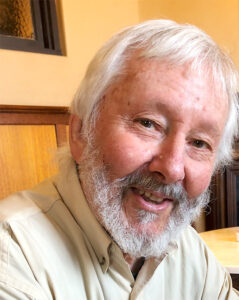
Department of Aboriginal and Intercultural Studies (DAIS)
DAIS was created to conduct all undergraduate and postgraduate higher education courses and units in Aboriginal and Intercultural Studies, as well as pre-tertiary courses and Aboriginal Programs. These included all the educational and support programs for Aboriginal students in WACAE, on campus, at off campus centres, and through external studies.
John Sherwood, who founded ATEP in 1973 and Migrant Education programs in 1975, became the Head of DAIS. He left that position and transferred as a Senior Lecturer to the Bunbury Campus of WACAE in 1986, and was succeeded as Head of Department by Peter Reynolds. Aside from courses, Aboriginal Programs (projects supporting Aboriginal students) within DAIS were led by a Senior Coordinator, and following the early departure of the first appointee, Simon Forrest was appointed in 1985 as Senior Coordinator of Aboriginal Programs.
Institute of Applied Aboriginal Studies (IAAS)
IAAS was responsible for consultancies in research, course and curriculum development, educational programs, Aboriginal arts and other Aboriginal projects. John Sherwood was appointed as Acting Head of IAAS in February 1984, to commence projects and activities. Substantial commonwealth funding was obtained by IAAS through a national tender process for the Aboriginal Electoral Program, to produce materials to assist Aboriginal people with electoral matters including voting. Bryn Roberts was appointed to coordinate this program.

A wide range of teaching and motivational resources were produced, for adults and also children (WA College of Advanced Education College Contact 1985, p 3).14 Another project was the video filming in 1984 of the Punmu (Martu) community and its new independent school in the Great Sandy Desert of WA (Sherwood, John 1984 Letter to Ray Vallance).15
Late in 1984, Toby Metcalfe was appointed substantively as Head of IAAS, and within a few years had developed at least 34 projects within IAAS.
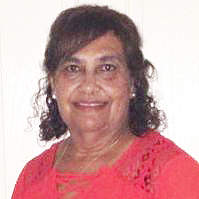
Verna Vos, a graduate of the Aboriginal Supported Group Intake, succeeded Toby as Head of IAAS in 1987, and was followed by, a senior Aboriginal, Tom Baban.
Toby Metcalfe writes about IAAS:
“John Sherwood was responsible for gaining our first major funding coup, a comprehensive suite of materials to embody a national program of electoral system education. The funding for the program, granted in 1984 by the Australian Electoral Commission, was $229,000. It was orientated to first nation voters, but the materials were found to be valuable within the wider Australian community context. A very competent co-ordinator, Bryn Roberts, was appointed and together we built a sizable staff. The program provided a comprehensive range of educational materials, supported by print and media resources. The majority of staff appointed was Aboriginal. We had our own media production unit, headed by Duncan Graham and his media technician and photographer, Rob Dewar. Their output was phenomenal. Duncan was one of Australia’s most accomplished media producers”.
Some forty other projects were undertaken, many under large funding grants from Federal and State bodies. The Institute also published works by other researchers and authors. These include:
- Illustrated Topical Dictionary of the Western Desert Language, by Wilf Douglas
- Illustrated Dictionary of the South-West Aboriginal Language, by Wilf Douglas
- Gribble, by Neville Green
- WIKARU, the journal of ATEP and later the Institute of Applied Aboriginal Studies, Western Australian College of Advanced Education, which I edited for a couple of years while I was Head of Institute. John Sherwood was editor for a period, but Simon Forrest became the longer-term editor.
- Report with recommendations on linguistic aspects of the bilingual Education Program, commissioned by the Northern Territory Department of Education. Toby Metcalfe (1981)
- Learning My Way, Barbara Harvey and Suzanne McGInty
- Working with Aboriginal People in Remote Areas, Simon Forrest and John Sherwood
- Aboriginal Land Rights, Duncan Graham
- Yongkeran – a Nyoongar Hunting Story
- Nyoongar and Wanggatha – children’s work books
- Traditional Aboriginal Teacher Education Program – outline and report
- A number of educational videos were produced:
- Careful with my Culture What’s special about being Aboriginal?
- Bush Tucker
- Aboriginal Writing – Jack Davis
- Aboriginal Writing – Archie Weller
- Aboriginal Artist – Shane Pickett
- Knock, Knock, Beware, starring Simon Forrest
Prolific outputs of quality publications and teaching materials, were generated through AERU, the Aboriginal Education Resources Unit. Mount Lawley College was one of the three systems which established the Unit, along with the WA Education Department and the Catholic Education Commission. The IAAS was a key player in many aspects of AERU.
There was also another project for which we received $30,000. It was to fund a survey of the Aboriginal languages in the south-west of the State.
Aboriginalisation Developed, 1980-1997
The beginning of the new decade started to see more Aboriginal staff in the program. The appointment of Aboriginal staff around this time was also the beginning of Aboriginal staff, in senior positions within ATEP, and ultimately the creation of Aboriginal managed and led academic department (the Department of Aboriginal Programs in 1991).
Victor Forrest was appointed in 1980, as a lecturer in the ATEP program at Mt Lawley, the first Aboriginal person in WA and one of the first in Australia appointed to an academic position at a tertiary institution. Vic filled this position for nearly two years before taking up a position as Research Officer with the newly formed National Aboriginal Education Committee (NAEC). Simon Forrest was appointed to the position as Lecturer, after Vic’s departure. Also appointed around that time as Aboriginal Enclave (later Aboriginal Student Support Centre) Co-ordinators were Paulina Garrett, Mingli Wanjurri McGlade, Mark McKenzie, Graeme Gower and Owen Grant.
In 1985, Simon Forrest was appointed to a new position in addition to his lecturing role. The new position was titled Senior Co-ordinator of Aboriginal Programs. This was really the commencement of Aboriginal leadership and management of Aboriginal programs within the Department of Aboriginal and Intercultural Studies. Other Aboriginal people were appointed to staff during this time as Aboriginal programs grew were: Len Collard, Denise Groves, Caron Farmer, George Walley and Joanne Della Bona. From 1989 to 1990, Ian Perdrisat was Senior Co-ordinator of Aboriginal Programs, and in 1991 Simon Forrest resumed the role.
In 1991, with the establishment of Edith Cowan University (ECU), the Department of Aboriginal Programs was created independent of the Department of Aboriginal and Intercultural Studies (DAIS). The Department of Aboriginal Programs, withSimon Forrest as Chair (Head) of department, was the first Aboriginal led and managed university academic department in WA and one of the first in Australia.
Kurongkurl Katitjin School of Indigenous Australian Studies
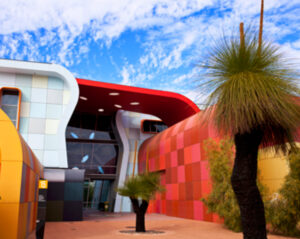
A review of Aboriginal academic activities at ECU was conducted in 1992, which led to the Department of Aboriginal Programs being given School status in 1993, as the School of Indigenous Australian Studies with Associate Professor, Simon Forrest being appointed as inaugural Head of School.
This was the only School to be established initially at ECU as a stand-alone school with no departments. This stand-alone school structure was later adopted across the whole university. During 1993, the Noongar name Kurongkurl Katitjin was added as a prefix, making the full name Kurongkurl Katitjin School of Indigenous Australian Studies.
Kurongkurl Katitjin is committed to supporting tailored community outreach and engagement programs to inspire Aboriginal and Torres Strait Islander people to seek higher education. Its flagship high school program, Bilang Bilang, is a residential program giving students a taste courses available at ECU’s Joondalup and Mount Lawley campuses. It leads a range of projects focusing on health, education and culture.
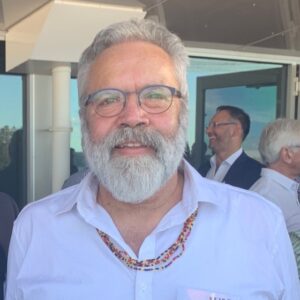
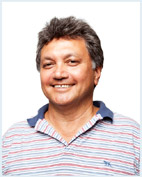
In 1997, with the resignation of Simon Forrest as Head of School, Graeme Gower was appointed as Head of School and continued in that role until 2007. From 1991 to 2007 the independent Aboriginal led and managed Aboriginal academic activities at WACAE and ECU was significant in a number of ways including:
- The growth of Aboriginal student numbers (highest in Australia).
- The growth in employment of Aboriginal staff. Many were previous graduates of the ATEP program.
- The expansion and variety of Aboriginal academic activities at the university. The leadership during the period 1991-2007 of these academic entities were led by two graduates of the ATEP program of the late 1970s.
Reunions of Students and Staff of ATEP and DAIS
Two reunions of students and staff have been held, in 2016 and 2021. They were both rewarding and emotional events, with memories of student days which had extremely positive outcomes in the lives of so many Aboriginal people. Professional photos of the attendees at the 2017 Reunion are available from ECU.
A video of students’ memories of the early years, and staff visuals from the 2021 reunion sre available.
Summary of Courses, Programs and Projects offered by ATEP and DAIS, 1974-1999
- ATEP = Aboriginal Teacher Education Program (1973-6)
- DAIS = Department of Aboriginal and Intercultural Studies (from 1976)
- IAAS = Institute for Applied Aboriginal Studies (from 1984)
- KK = Kurongkurl Katitjin School of Indigenous Studies (from 1991)
DAIS replaced ATEP from 1976 onwards, with courses and projects in Migrant and Intercultural Studies added to the Aboriginal ones).
ATEP and later DAIS courses, programs and projects were located in many places around Australia and were administered through Mount Lawley College of Advanced Education, which later became Mount Lawley Campus of WA College of Advanced Education and later of Edith Cowan University.
Kurongkurl Katitjin was created in 1991, by combining all Aboriginal programs (not courses) together, initially under the Aboriginal leadership of Assoc Professor Simon Forrest.
COURSES – ADVANCED EDUCATION (Total or partial Aboriginal content)
- Graduate Diploma in Aboriginal Education (1974-6, external only, all over Australia)
- Graduate Diploma in Intercultural Studies (1976 on, external only, all over Australia)
- Diploma of Teaching (Major, Minor and Electives on Mt Lawley and Bunbury campuses)
- Diploma of Teaching – Conversion (upgraded 2 year Certificate to 3 year Diploma).
- Associate Diploma in Applied Arts and Sciences (External studies, all over Australia)
- Bachelor of Arts (External studies, all over Australia)
- Bachelor of Education (External studies, all over Australia)
COURSES – PRE-TERTIARY
- Advanced Education Entry Certificate (1977 on, external, all over Australia)
- General Education Certificate (1978 on, external, all over Australia)
PROJECTS
- Aboriginal Student Group Intakes (1976, testing and interviews, then offers of places)
- Off-Campus Centres (Dip Teach offered in Broome, Kununurra, Carnarvon, Kalgoorlie)
- South West Aboriginal Studies (SWAS) (family trees, stories and photos published)
- Aboriginal Electoral Project (materials and training manuals for elections)
- Publications (many books, Wikaru newsletter posted to most WA schools, documents)
- Media Productions (16mm colour film, videos, sound tape recordings, slide tape kits, photo sets, teaching resources)
- ATEP and later DAIS was a foundation partner with the Education Department of WA and Catholic Education Commission of WA in the joint Aboriginal Education Resources Unit, known as AERU. This produced an amazing range of high quality classroom and teacher resources made available to pre-schools, schools and other institutions all over WA.
Conclusion
The creation of the Aboriginal Teacher Education Program (ATEP) out of nothing in 1973, and the steady expansion of courses, programs and projects in the Aboriginal field, then in the migrant and intercultural field, as summarised above, is a case of “the right person in the right place at the right time”. The Whitlam Labor government was changing 26 years of policy, with a new, large budget for Aboriginal Education and particularly teacher education.
Mount Lawley Teachers College was on the cusp of becoming a new higher education institution, namely Mount Lawley College of Advance Education, with authority to design and offer a range of higher education courses in addition to teacher education, for a wide spread of professionals. The college lodged a submission for huge commonwealth funding for ATEP, which was granted in full, and continued with additional projects, in subsequent years.
The newness of Mount Lawley College of Advanced Education was to ATEP’s advantage in several ways. Senior administrators were flexible in allowing special conditions to apply to testing and selection of Aboriginal applicants for student places, providing course requirments were met. The accounting system was adapted to enable the huge grant to be expended and reported. The college became much more multicultural.
Approvals were given for many innovatory patterns, locations and courses. ATEP offered external studies courses before the college did, created two levels of pretertiary courses to prepare Aboriginal students for higher education, and established Off-Campus Centres enabling students to live and work in their home communities while studying with the support of local tutors.
The rest, as they say, is history. In this case, it was the history of the whole range of innovatory Aboriginal, migrant and intercultural programs and projects, operated on and off Mount Lawley Campus, and with projects, staff and students all over Australia. Mount Lawley College’s Aboriginal and Intercultural programs were the most comprehensive in Australia in the 1970s and 1980s.